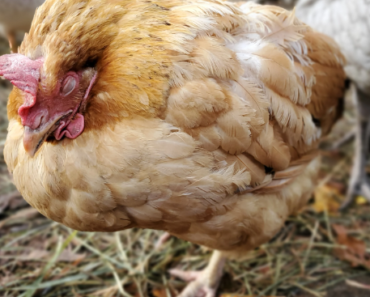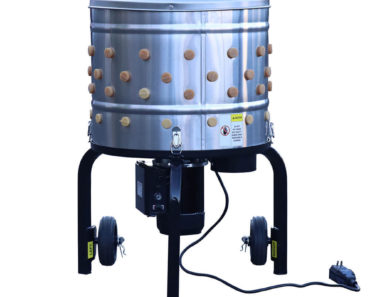Contents
- 1 Understanding the Distinction: Free Range vs. Organic Chicken
- 2 Difference in Farming Methods
- 3 Nutritional Considerations
- 4 Certification and Labeling
- 5 FAQ
- 5.1 What is the main difference between free-range and organic chicken production methods?
- 5.2 How does the quality of meat differ between free-range and organic chickens?
- 5.3 Are there any specific health benefits associated with consuming free-range or organic chicken compared to conventionally raised chicken?
- 5.4 Related Posts

We will explore the difference between free range and organic chicken. Understanding the distinctions between these two labels is crucial for making informed choices when it comes to poultry consumption. Let’s delve into the unique characteristics and benefits of both options. Stay tuned for an enlightening read!
Understanding the Distinction: Free Range vs. Organic Chicken
When it comes to poultry, there are two common terms that often create confusion among consumers: free-range and organic. It is important to understand the distinction between the two in order to make an informed choice based on your preferences and values.
Free-range chicken refers to birds that have access to outdoor areas where they can roam and engage in natural behaviors, such as pecking the ground or spreading their wings. However, the specific requirements for labeling a chicken as free-range can vary between countries and certification programs. Some may require a minimum amount of outdoor time, while others focus on providing access to a certain amount of space per bird.
On the other hand, organic chicken refers to birds that are raised without the use of antibiotics or hormones and are fed organic feed. Additionally, organic chicken farms must adhere to strict regulations regarding the use of pesticides, synthetic fertilizers, and genetically modified organisms (GMOs). This ensures that the entire production process, from the feed to the environment, follows organic standards.
It’s worth noting that while all organic chickens are raised without antibiotics and hormones, not all free-range chickens are necessarily organic. Free-range chickens may still be given antibiotics or hormones unless specified otherwise by the labeling.
Ultimately, the choice between free-range and organic chicken depends on your personal values and priorities. If you prioritize animal welfare and access to outdoor areas, free-range chicken may be the ideal choice for you. On the other hand, if you prioritize organic practices and minimizing exposure to potentially harmful substances, organic chicken may be the better option.
Understanding the distinction between free-range and organic chicken allows you to make an informed decision when purchasing poultry products. Whether you choose free-range or organic, both options provide alternatives to conventionally raised chicken, each with its own set of benefits.

Difference in Farming Methods
Free range chicken is raised in a farming system where the birds have access to outdoor areas, allowing them to roam and forage naturally. On the other hand, organic chicken refers to birds that are raised following specific guidelines set by organic certification bodies. This includes being fed organic feed and not being given any antibiotics or hormones.
Nutritional Considerations
Free range chicken is known to have a slightly different nutritional profile compared to conventional chicken. The increased physical activity and access to a varied diet can result in higher levels of certain nutrients, such as omega-3 fatty acids and vitamin E. Organic chicken, while also benefiting from the natural foraging, may have similar nutritional content to conventionally-raised chicken.
Certification and Labeling
When it comes to labeling, free range chicken may be labeled as such if it meets specific criteria regarding outdoor access. However, organic chicken must adhere to strict certification standards set by organizations like the USDA or EU organic regulations. This means that organic chicken carries a certified label indicating it was produced according to organic farming practices.
FAQ
What is the main difference between free-range and organic chicken production methods?
Free-range chicken production refers to a method where chickens have access to outdoor spaces. They are able to roam freely, peck at the ground, and engage in natural behaviors. However, the specific guidelines for free-range labeling can vary by country, so it’s important to understand the standards in your region.
Organic chicken production, on the other hand, goes beyond free-range practices. In addition to access to outdoor spaces, organic chicken is raised according to specific organic certification standards. These standards dictate that the chickens must be fed an organic diet, which means they consume feed that is free from synthetic pesticides, genetically modified organisms (GMOs), and antibiotics.
Overall, while both free-range and organic chicken production methods prioritize the welfare of the birds, the main difference lies in the specific certification requirements for organic chicken, including the use of organic feed.
How does the quality of meat differ between free-range and organic chickens?
The quality of meat differs between free-range and organic chickens in several ways. Free-range chickens are raised in a more natural environment, where they have access to outdoor areas to roam and forage for food. This allows them to exercise and develop stronger muscles, resulting in leaner and more flavorful meat. Additionally, their diet may consist of a wider variety of foods, including insects, grass, and other natural sources, which can further enhance the flavor of the meat.
On the other hand, organic chickens are raised without the use of antibiotics, hormones, or synthetic pesticides. The organic certification ensures that the chickens are fed organic feed that is free from genetically modified organisms (GMOs) and grown without the use of synthetic fertilizers or pesticides. This can contribute to the overall quality of the meat by eliminating potential chemical residues and promoting a more natural and healthier product.
In terms of taste, both free-range and organic chickens tend to have a richer, more succulent flavor compared to conventionally raised chickens. However, the specific taste profile can vary depending on factors such as the breed, feed, and age at which the chicken is processed.
While both free-range and organic chickens offer higher quality meat compared to conventionally raised chickens, they differ in terms of the environment in which they are raised and the regulations surrounding their production. Free-range chickens benefit from more natural living conditions, while organic chickens are produced without the use of antibiotics, hormones, and synthetic pesticides.
Are there any specific health benefits associated with consuming free-range or organic chicken compared to conventionally raised chicken?
Consuming free-range or organic chicken can offer several health benefits compared to conventionally raised chicken.
1. Lower Antibiotic and Hormone Exposure: Conventionally raised chickens are often given antibiotics and hormones to promote growth and prevent disease. These substances can accumulate in their meat and may pose health risks to consumers. On the other hand, free-range or organic chicken is not treated with antibiotics or hormones, reducing the potential exposure to these substances.
2. Higher Nutritional Value: Free-range or organic chicken tends to have a higher nutritional value compared to conventionally raised chicken. Research suggests that it contains more omega-3 fatty acids, which are beneficial for heart health, brain function, and reducing inflammation. Additionally, it may have higher levels of vitamins and minerals due to a more natural diet and better living conditions.
3. Lower Risk of Contaminants: Free-range or organic chicken is typically subject to stricter regulations and testing for contaminants such as pesticides, heavy metals, and other toxins. This reduces the risk of consuming harmful substances that may be present in conventionally raised chicken.
4. Better Animal Welfare Standards: Free-range or organic chicken comes from birds that have access to outdoor areas, allowing them to move around, engage in natural behaviors, and have a healthier lifestyle overall. This improved welfare may contribute to the quality of the meat and its potential health benefits.
While free-range or organic chicken may offer certain advantages, it’s important to note that proper food handling and cooking practices are essential to ensure overall food safety and minimize the risk of foodborne illnesses.
Understanding the difference between free range and organic chicken is crucial for consumers who prioritize animal welfare and sustainable farming practices. While both options offer advantages, free range chicken provides animals with access to the outdoors and a more natural lifestyle, resulting in better quality meat. On the other hand, organic chicken ensures that birds are raised without antibiotics or growth hormones, ultimately promoting healthier choices for individuals concerned about their own well-being. In making a decision, it’s essential to consider personal values and preferences. Whichever option you choose, supporting responsible farming practices contributes to a more sustainable future for the poultry industry.






